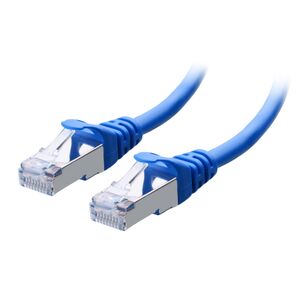We are still actively working on the spam issue.
Difference between revisions of "Home Server/Networking/Ethernet"
| Line 7: | Line 7: | ||
''The speed of your LAN is based on the network interfaces of your servers and the capabilities of your switches.'' | ''The speed of your LAN is based on the network interfaces of your servers and the capabilities of your switches.'' | ||
| − | You will see numbers like ''10/100/1000'' on networking hardware. This refers to the data transfer speed of network hardware and is measured in megabits per second (Mbps). Make sure your hardware supports 1000 Mbps (1 Gbps). If you only see ''10/100'' | + | You will see numbers like ''10/100/1000'' on networking hardware. This refers to the data transfer speed of network hardware and is measured in megabits per second (Mbps). Make sure your hardware supports 1000 Mbps (1 Gbps). If you only see ''10/100'' the hardware only supports a maximum of 100 Mbps. Trash it. |
==Ethernet CAT Specs== | ==Ethernet CAT Specs== | ||
Revision as of 18:38, 19 February 2024
Ethernet cables come in different types, each designed for specific networking and data transfer needs.
Cat 5e supports up to 1 Gbps at 100 meters. This is the standard choice for most networks and building wiring. Higher categories such as 6, 6a, and 7 support faster speeds and reject electromagnetic interference better. Even if your LAN (your internal network) only supports 1 Gbps, using higher categories is beneficial.
The speed of your LAN is based on the network interfaces of your servers and the capabilities of your switches.
You will see numbers like 10/100/1000 on networking hardware. This refers to the data transfer speed of network hardware and is measured in megabits per second (Mbps). Make sure your hardware supports 1000 Mbps (1 Gbps). If you only see 10/100 the hardware only supports a maximum of 100 Mbps. Trash it.
Ethernet CAT Specs
- Cat 5: This is an older type of Ethernet cable, capable of supporting up to 100 Mbps at 100 meters. It's not commonly used today due to its lower speed capabilities.
- Cat 5e: An enhanced version of Cat 5, it supports up to 1 Gbps at 100 meters. It's designed to reduce crosstalk, i.e., interference from adjacent wires. It's a common choice for home networks.
- Cat 6: This cable supports up to 1 Gbps at 100 meters or 10 Gbps at shorter distances (up to 55 meters). It has better insulation to reduce crosstalk and is suitable for business networks.
- Cat 6a: An augmented version of Cat 6, it supports 10 Gbps at 100 meters. It has even better insulation to reduce crosstalk.
- Cat 7: This cable supports up to 10 Gbps at 100 meters and has a higher frequency of 600 MHz. It uses a modified GigaGate45 connector, which is backward compatible with RJ45 Ethernet ports.
- Cat 7a: An augmented version of Cat 7, it supports up to 10 Gbps at 100 meters and has a higher frequency of 1000 MHz.
- Cat 8: The latest and fastest Ethernet cable, it supports up to 25 Gbps or 40 Gbps at distances up to 30 meters. It's primarily used in data centers where high-speed connections are required.
